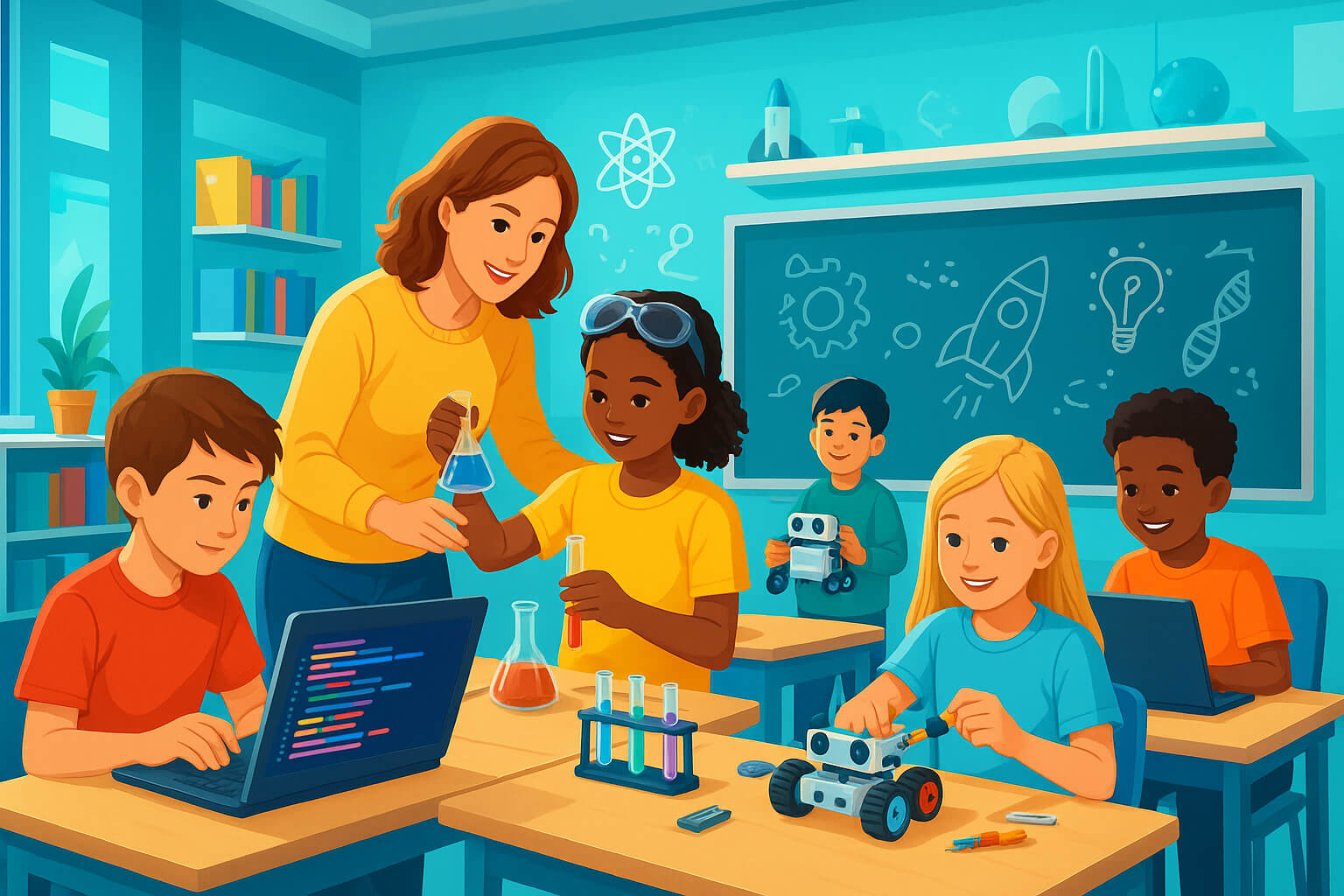STEM Education: Preparing Youth for the Future

In an age marked by digital transformation, climate challenges, and an increasingly interconnected global economy, Science, Technology, Engineering, and Mathematics (STEM) education is no longer optional—it’s essential. The pace of technological advancement continues to reshape every aspect of our lives, from how we work and communicate to how we diagnose illnesses and generate energy. As a result, equipping the next generation with strong STEM competencies is vital to ensure they can not only adapt to future challenges but also become the innovators and leaders of tomorrow.
Why STEM Matters for the Next Generation
- The future workforce is undergoing a seismic shift. Jobs that were once considered stable are being redefined or replaced by automation, artificial intelligence, and other emerging technologies. According to the World Economic Forum, nearly 97 million new roles could emerge globally by 2025, many of which are directly tied to STEM fields such as robotics, biotechnology, renewable energy systems, data science, and cybersecurity.
- But STEM education isn’t just about training coders, engineers, or scientists. It nurtures a mindset of inquiry, critical thinking, and continuous learning. These are transferable skills that apply across all sectors—whether in finance, healthcare, design, or entrepreneurship.
- For example, a student learning to code not only gains technical know-how but also develops logical reasoning, algorithmic thinking, and problem-solving abilities. Working on a group robotics project builds collaboration, adaptability, and resilience—traits essential in a world that demands interdisciplinary knowledge and agile learning.
- Even in creative fields, the structured learning and iterative practice common in STEM mirror principles found in music or art. A guide to learning guitar for free, skills like persistence, curiosity, and pattern recognition are as crucial in the arts as they are in scientific discovery. STEM teaches students how to learn, unlearn, and relearn—an increasingly valuable trait in the 21st century.
Inspiring Youth Through Practical Exposure
- While theoretical understanding is important, real-world application is where STEM truly comes alive. When students can see and touch what they’re learning, it fuels curiosity and reinforces learning in meaningful ways.
- Hands-on STEM experiences—like building circuits, programming robots, designing bridges, or launching small satellites—make abstract concepts tangible. Activities such as science fairs, hackathons, coding bootcamps, and makerspaces allow students to explore STEM through creativity and experimentation.
- Programs like FIRST Robotics, Code.org, and Girls Who Code provide students with structured opportunities to engage with cutting-edge technology and meet role models from the industry.
- Schools that actively integrate these kinds of learning environments—via coding clubs, engineering design challenges, and community science projects—have shown significantly higher student engagement and retention rates in STEM subjects.
- Organizations like NASA’s STEM Engagement offer extensive outreach programs, including virtual internships, design competitions, and teacher resources. Their initiatives have inspired countless young minds to dream beyond Earth and pursue careers in space science, astrophysics, and engineering.
- Similarly, understanding sample packs shows how music production intersects with STEM, helping young creators explore digital sound design, acoustics, and signal processing—skills grounded in physics and mathematics.
Bridging the Gender and Diversity Gap
- One of the most pressing issues facing STEM education today is the lack of diversity. Women, minorities, and students from low-income communities remain significantly underrepresented in many STEM careers. This underrepresentation isn’t just a matter of fairness—it limits the diversity of thought and innovation in critical industries.
- According to the National Science Foundation (NSF), women and Black, Hispanic, and Native American populations are still significantly underrepresented in science and engineering occupations, despite modest gains in educational attainment.
- To close this gap, it’s crucial to implement intentional inclusion efforts early in a student’s academic journey. This can include:
- Parents, educators, and community leaders play a crucial role by providing early encouragement and visibility into STEM opportunities. When children see someone who looks like them succeeding in STEM, their belief in their own potential strengthens.
Preparing Youth for the Future Economy
- Today’s economy is knowledge-driven, innovation-led, and technology-powered. Whether students grow up to become engineers, artists, healthcare workers, or entrepreneurs, STEM skills provide a robust foundation for success.
- Digital literacy and data fluency—once considered niche—are now core skills across nearly all industries. According to McKinsey & Company, future jobs will require not only cognitive and technical skills but also social and emotional intelligence—many of which STEM learning promotes through group projects, iterative problem-solving, and real-world experimentation.
- Most importantly, STEM education nurtures a growth mindset—a belief that abilities can improve through effort and practice. This mindset helps students take risks, recover from failure, and continue learning throughout life.
- Just as royalty-free music platforms highlights the importance of making tools accessible to creators, STEM learning must also be democratized. This includes ensuring digital access in underserved communities, affordable educational resources, and inclusive curriculums designed for all learning styles.
- Some valuable open STEM learning resources include:
Conclusion
- STEM education is far more than a curriculum—it is a catalyst for societal transformation. By fostering analytical thinking, innovation, and resilience, it equips young people not only to navigate the complexities of the future but also to shape it.
- To build a generation that’s ready for tomorrow, we must invest in quality STEM programs, provide practical learning opportunities, and create inclusive spaces where every student can thrive. Whether designing sustainable cities, curing diseases, or composing the next digital symphony, the next generation of leaders will need the tools STEM provides to imagine boldly and act wisely.
